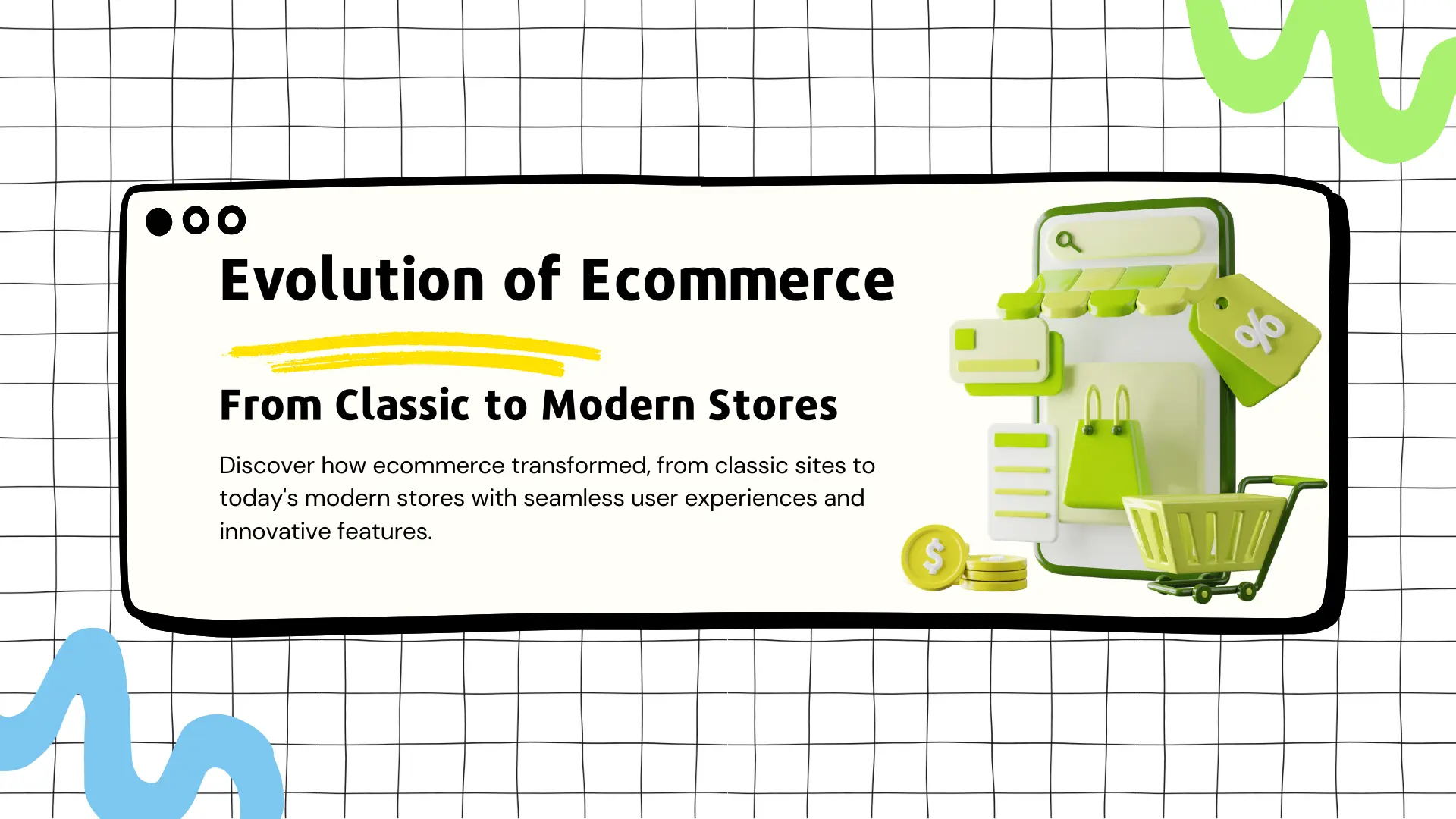Evolution of Ecommerce: From Classic to Modern Stores
Evolution of Ecommerce: From Classic to Modern Stores
Getting Started
Introduction: The Evolution of Ecommerce
Introduction: The Evolution of Ecommerce
Ecommerce has undergone a significant transformation since its inception. What we now take for granted—well-designed stores, seamless user experiences, and a wide range of features—was once groundbreaking. The evolution of ecommerce reflects the rapid pace of innovation and how revolutionary ideas have become the foundation of online shopping today.
In this article, we’ll take a trip down memory lane, uncovering some classic ecommerce websites that paved the way and highlighting the key differences between the early days of ecommerce and its modern-day incarnation.
Ecommerce has undergone a significant transformation since its inception. What we now take for granted—well-designed stores, seamless user experiences, and a wide range of features—was once groundbreaking. The evolution of ecommerce reflects the rapid pace of innovation and how revolutionary ideas have become the foundation of online shopping today.
In this article, we’ll take a trip down memory lane, uncovering some classic ecommerce websites that paved the way and highlighting the key differences between the early days of ecommerce and its modern-day incarnation.
1979: Michael Aldrich's Pioneering Step into Ecommerce
1979: Michael Aldrich's Pioneering Step into Ecommerce
In 1979, Michael Aldrich laid the groundwork for what would later evolve into modern ecommerce, long before the invention of the Internet and the World Wide Web (WWW). Aldrich's innovative approach involved connecting a modified television set to a transaction-processing computer via a standard telephone line, allowing consumers to interact with businesses from the comfort of their homes.
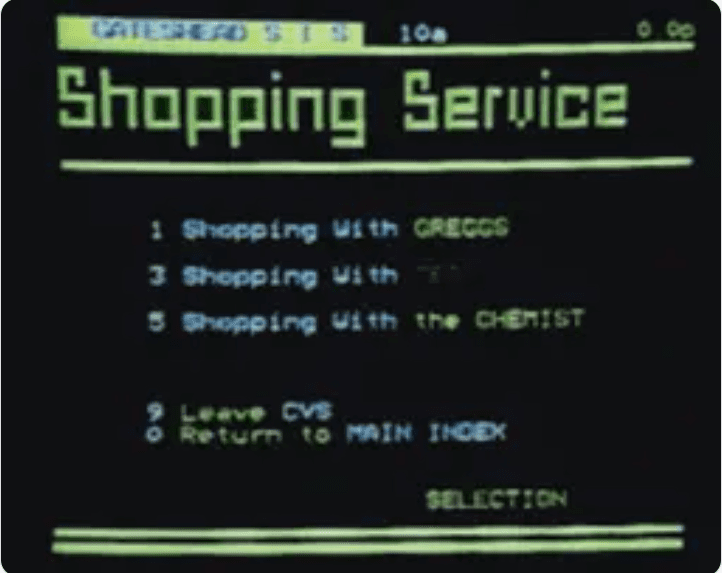
Aldrich envisioned Videotex, the underlying technology, as a revolutionary communication tool that could be universally accessible and participative—marking a major leap forward since the invention of the telephone. His foresight laid the foundation for online shopping, even though it would take decades for the concept to fully evolve into the web-based platforms we use today.
Two early adopters of this groundbreaking system were Gateshead SIS in collaboration with Tesco and Bradford Centrepoint with Wm. Morrison. Consumers could browse and select groceries using their television screens, with the order transmitted via telephone lines to local supermarkets. Once received, the supermarket would package the items and arrange delivery, making this one of the first documented instances of online grocery shopping.
Although Aldrich’s system seems basic compared to today’s ecommerce platforms, it was revolutionary at the time. His invention allowed businesses to directly engage with consumers in a way that had never been possible before—foreshadowing the more sophisticated, internet-driven ecommerce systems that would come in the following decades.
In 1979, Michael Aldrich laid the groundwork for what would later evolve into modern ecommerce, long before the invention of the Internet and the World Wide Web (WWW). Aldrich's innovative approach involved connecting a modified television set to a transaction-processing computer via a standard telephone line, allowing consumers to interact with businesses from the comfort of their homes.

Aldrich envisioned Videotex, the underlying technology, as a revolutionary communication tool that could be universally accessible and participative—marking a major leap forward since the invention of the telephone. His foresight laid the foundation for online shopping, even though it would take decades for the concept to fully evolve into the web-based platforms we use today.
Two early adopters of this groundbreaking system were Gateshead SIS in collaboration with Tesco and Bradford Centrepoint with Wm. Morrison. Consumers could browse and select groceries using their television screens, with the order transmitted via telephone lines to local supermarkets. Once received, the supermarket would package the items and arrange delivery, making this one of the first documented instances of online grocery shopping.
Although Aldrich’s system seems basic compared to today’s ecommerce platforms, it was revolutionary at the time. His invention allowed businesses to directly engage with consumers in a way that had never been possible before—foreshadowing the more sophisticated, internet-driven ecommerce systems that would come in the following decades.
1984: CompuServe’s Electronic Mall
1984: CompuServe’s Electronic Mall
In 1984, CompuServe emerged as a trailblazer in the realm of ecommerce, inching closer to a comprehensive online shopping experience. As one of the earliest online service providers, CompuServe offered users a range of features, including email, message boards, and access to various online resources.
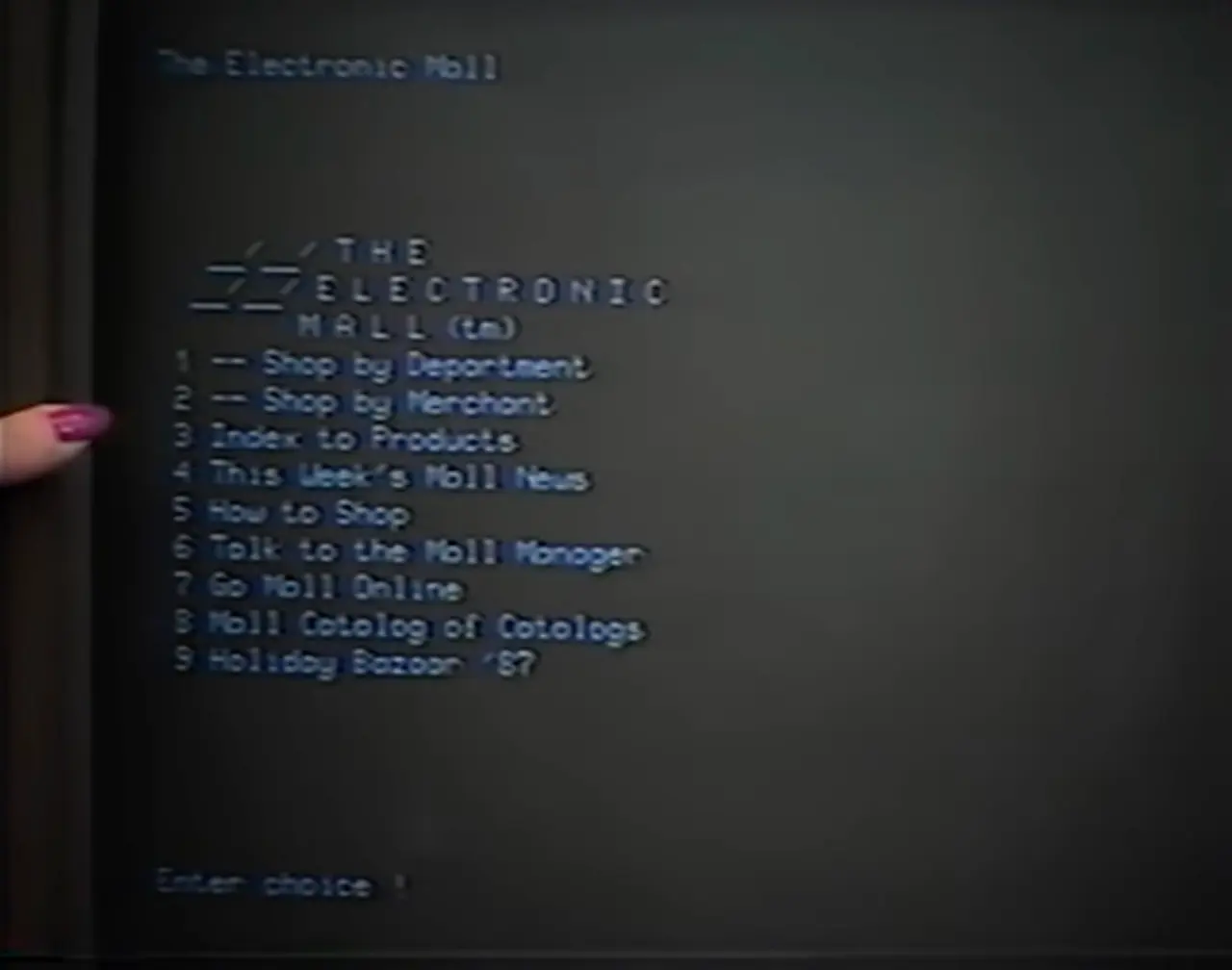
The introduction of the “Electronic Mall” was a significant milestone in the evolution of ecommerce. This innovative service allowed users to purchase items from over 100 online retailers through a straightforward command-line interface (CLI). Customers could browse different vendors and product categories, making it a precursor to today’s more advanced ecommerce platforms. Notably, the system also allowed users to enter their credit information for future transactions, which was a pioneering step towards creating a more seamless shopping experience.
While it may seem rudimentary by today’s standards, CompuServe’s Electronic Mall represented a crucial leap in consumer technology, enabling users to engage in online shopping long before the mainstream adoption of the Internet. It laid the groundwork for the user-friendly interfaces we expect from modern ecommerce sites, demonstrating the potential of digital retail to transform the way consumers shop.
For those interested, a demo of this early online shopping experience can be viewed here.
In 1984, CompuServe emerged as a trailblazer in the realm of ecommerce, inching closer to a comprehensive online shopping experience. As one of the earliest online service providers, CompuServe offered users a range of features, including email, message boards, and access to various online resources.

The introduction of the “Electronic Mall” was a significant milestone in the evolution of ecommerce. This innovative service allowed users to purchase items from over 100 online retailers through a straightforward command-line interface (CLI). Customers could browse different vendors and product categories, making it a precursor to today’s more advanced ecommerce platforms. Notably, the system also allowed users to enter their credit information for future transactions, which was a pioneering step towards creating a more seamless shopping experience.
While it may seem rudimentary by today’s standards, CompuServe’s Electronic Mall represented a crucial leap in consumer technology, enabling users to engage in online shopping long before the mainstream adoption of the Internet. It laid the groundwork for the user-friendly interfaces we expect from modern ecommerce sites, demonstrating the potential of digital retail to transform the way consumers shop.
For those interested, a demo of this early online shopping experience can be viewed here.
1992: Book Stacks Unlimited—The Predecessor to Amazon
1992: Book Stacks Unlimited—The Predecessor to Amazon
While many people associate Amazon with the rise of online bookstores, it’s important to note that it wasn’t the first. Enter Book Stacks Unlimited, which launched in 1992—three years prior to Amazon's inception. Initially, it operated as a dial-up bulletin board, a unique concept at the time, before transitioning to the web with the launch of Books.com in 1994. This platform would eventually be acquired by Barnes & Noble.

Book Stacks Unlimited distinguished itself in the crowded market of online bookselling by offering an impressive catalog of over 500,000 titles. What set it apart were its innovative features that enhanced the shopping experience: editorial book recommendations, insightful book summaries, and even RealAudio interviews with authors. This early emphasis on content-driven engagement foreshadowed the personalization and customer-focused strategies that dominate today’s ecommerce landscape.
The success of Book Stacks Unlimited highlights the potential of the internet to revolutionize the book retail industry long before the meteoric rise of Amazon. It paved the way for a more interactive and enriching online shopping experience, demonstrating how digital platforms could foster a sense of community and connection among readers and authors.
While many people associate Amazon with the rise of online bookstores, it’s important to note that it wasn’t the first. Enter Book Stacks Unlimited, which launched in 1992—three years prior to Amazon's inception. Initially, it operated as a dial-up bulletin board, a unique concept at the time, before transitioning to the web with the launch of Books.com in 1994. This platform would eventually be acquired by Barnes & Noble.

Book Stacks Unlimited distinguished itself in the crowded market of online bookselling by offering an impressive catalog of over 500,000 titles. What set it apart were its innovative features that enhanced the shopping experience: editorial book recommendations, insightful book summaries, and even RealAudio interviews with authors. This early emphasis on content-driven engagement foreshadowed the personalization and customer-focused strategies that dominate today’s ecommerce landscape.
The success of Book Stacks Unlimited highlights the potential of the internet to revolutionize the book retail industry long before the meteoric rise of Amazon. It paved the way for a more interactive and enriching online shopping experience, demonstrating how digital platforms could foster a sense of community and connection among readers and authors.
1994: NetMarket and the First Sale on the Internet
1994: NetMarket and the First Sale on the Internet
In 1994, Dan Kohn founded NetMarket, a pioneering platform that sold various products, including CDs and books. This venture became historic when Kohn marked the first-ever sale of a product over the Internet using a credit card—a Ten Summoner’s Tales CD by Sting.
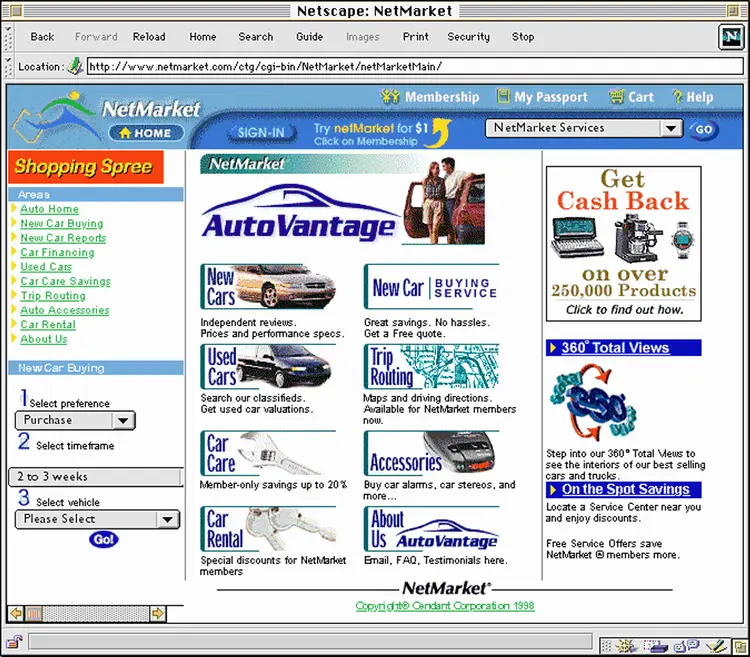
This milestone transaction was notable not just for its pioneering nature, but also for its security. According to a report by The New York Times, it was the first retail transaction conducted online using a commercially available version of advanced data encryption software designed to ensure privacy. Kohn famously remarked about the significance of this purchase, stating that “even if the N.S.A. was listening in, they couldn't get his credit card number.” This highlighted the growing importance of cybersecurity in ecommerce, a concern that remains paramount today as online transactions have become ubiquitous.
NetMarket’s innovative approach laid the foundation for modern ecommerce practices, demonstrating the feasibility of secure online transactions. This pivotal moment not only showcased the potential of the Internet for retail but also spurred the development of robust encryption technologies that protect consumers’ sensitive information in today’s digital marketplace.
In 1994, Dan Kohn founded NetMarket, a pioneering platform that sold various products, including CDs and books. This venture became historic when Kohn marked the first-ever sale of a product over the Internet using a credit card—a Ten Summoner’s Tales CD by Sting.

This milestone transaction was notable not just for its pioneering nature, but also for its security. According to a report by The New York Times, it was the first retail transaction conducted online using a commercially available version of advanced data encryption software designed to ensure privacy. Kohn famously remarked about the significance of this purchase, stating that “even if the N.S.A. was listening in, they couldn't get his credit card number.” This highlighted the growing importance of cybersecurity in ecommerce, a concern that remains paramount today as online transactions have become ubiquitous.
NetMarket’s innovative approach laid the foundation for modern ecommerce practices, demonstrating the feasibility of secure online transactions. This pivotal moment not only showcased the potential of the Internet for retail but also spurred the development of robust encryption technologies that protect consumers’ sensitive information in today’s digital marketplace.
1994-1999: The Emergence of Ecommerce Giants
1994-1999: The Emergence of Ecommerce Giants
1994: PizzaNet (Pizza Hut)
In 1994, Pizza Hut launched PizzaNet, an innovative online ordering service that allowed customers not only to browse the menu but also to customize their pizzas. Initially, due to concerns about potential misuse of the website, local restaurants would call customers to verify their orders, minimizing the risk of prank orders. This cautious approach highlights the skepticism that surrounded online transactions in the early days of ecommerce.

1995: Amazon
Amazon debuted in 1995 as an online bookstore. While the design was basic by today’s standards, it incorporated advanced features for its time, such as a virtual shopping cart, a secure method for entering credit card details, an internal search engine, and customer product reviews. The early engineering team utilized C programming to develop many of the website's features and relied on Berkeley DB for data storage, establishing a foundation for the scalable platform Amazon is today.

1996: eBay
Launched in 1996 as Auction Web, eBay was revolutionary as the first online auction website, creating a person-to-person marketplace where buyers could list items for sale and customers could place bids. Initially, eBay was free to use, but as traffic surged, the founders realized the need for a more robust hosting solution. This prompted them to introduce bidding commissions, enabling the platform to sustain itself financially.

1997: Apple
When Steve Jobs returned to Apple in 1997, one of his primary objectives was to enhance the company's ecommerce presence. By the end of that year, Apple launched an improved ecommerce website designed to provide a better customer experience, showcasing the increasing importance of online retail in tech-driven companies.
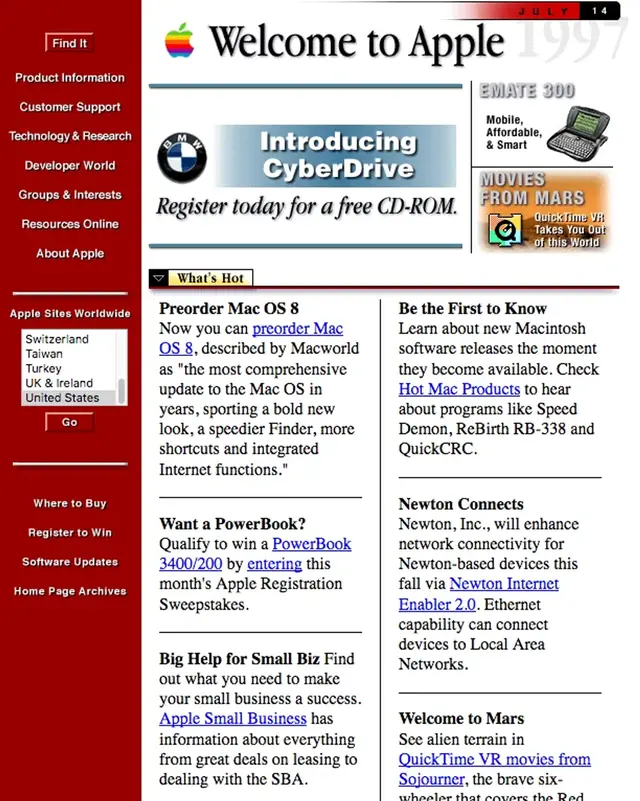
1998-1999: Nike
Nike initially created a website in 1997 focused on educating consumers about the brand and its products rather than facilitating online sales. However, in 1998, the Nike website evolved to include features allowing customers to customize their shoes. By 1999, Nike transitioned from providing editorial content to launching an online store, marking a significant shift in their approach to ecommerce.

1994: PizzaNet (Pizza Hut)
In 1994, Pizza Hut launched PizzaNet, an innovative online ordering service that allowed customers not only to browse the menu but also to customize their pizzas. Initially, due to concerns about potential misuse of the website, local restaurants would call customers to verify their orders, minimizing the risk of prank orders. This cautious approach highlights the skepticism that surrounded online transactions in the early days of ecommerce.

1995: Amazon
Amazon debuted in 1995 as an online bookstore. While the design was basic by today’s standards, it incorporated advanced features for its time, such as a virtual shopping cart, a secure method for entering credit card details, an internal search engine, and customer product reviews. The early engineering team utilized C programming to develop many of the website's features and relied on Berkeley DB for data storage, establishing a foundation for the scalable platform Amazon is today.

1996: eBay
Launched in 1996 as Auction Web, eBay was revolutionary as the first online auction website, creating a person-to-person marketplace where buyers could list items for sale and customers could place bids. Initially, eBay was free to use, but as traffic surged, the founders realized the need for a more robust hosting solution. This prompted them to introduce bidding commissions, enabling the platform to sustain itself financially.

1997: Apple
When Steve Jobs returned to Apple in 1997, one of his primary objectives was to enhance the company's ecommerce presence. By the end of that year, Apple launched an improved ecommerce website designed to provide a better customer experience, showcasing the increasing importance of online retail in tech-driven companies.

1998-1999: Nike
Nike initially created a website in 1997 focused on educating consumers about the brand and its products rather than facilitating online sales. However, in 1998, the Nike website evolved to include features allowing customers to customize their shoes. By 1999, Nike transitioned from providing editorial content to launching an online store, marking a significant shift in their approach to ecommerce.

2000-2005: The Dot-Com Crash
2000-2005: The Dot-Com Crash
The 1990s marked a period of heavy attention and adoption of the Internet. Web-based startups received substantial funding, and businesses scrambled to establish an online presence. However, this frenzy culminated in the Dot-Com Crash of March 2000, where the Nasdaq index plummeted by approximately 77% over the next few years.
The crash led to the downfall of many ecommerce and internet-based companies that had thrived during the 1990s, including major players like Amazon. Despite the challenges, some companies, such as eBay, managed to thrive amidst the turmoil.
SnowDevil and the Birth of Shopify
In 2004, SnowDevil was launched, ultimately sparking the creation of Shopify. Founders Tobias Lütke and Scott Lake aimed to sell snowboards online but struggled to find suitable software to realize their vision. They experimented with various tools, including Miva, OsCommerce, and Yahoo Stores, but encountered limitations that hindered their creativity.

Lütke noted that while they had a “great CSS-based layout done with all these new-fangled ‘web standards,’” the customization capabilities of Yahoo were inadequate—he could barely change the background color of the top frame. Frustrated by these constraints, Lütke and Lake set out to create a robust solution not only for themselves but for businesses worldwide. In 2007, they successfully built Shopify and transformed SnowDevil into a Shopify demo store, bringing their vision to life. Today, Shopify powers over 4.5 million websites globally, revolutionizing the ecommerce landscape.
A Note on 2000s Designs
Reflecting on the early 2000s, it's evident that there was a notable shift from the text-heavy, disorganized designs that characterized 1990s websites. Although designs remained somewhat clunky and congested, there was a clearer implementation of layouts and varied color schemes. Ecommerce sites began incorporating essential elements that are now standard, such as navigation menus and category sidebars.

During this period, tech giants like Amazon and eBay continued to innovate, introducing features that have become core components of ecommerce today. For instance, Amazon added "Search Inside the Book," allowing customers to search for specific words within books, while eBay introduced a live chat feature to enhance customer support.
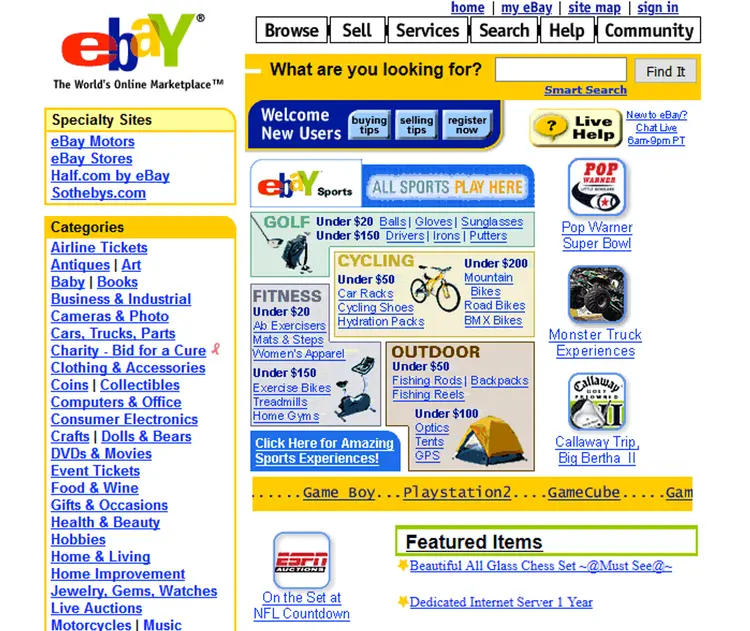
The 1990s marked a period of heavy attention and adoption of the Internet. Web-based startups received substantial funding, and businesses scrambled to establish an online presence. However, this frenzy culminated in the Dot-Com Crash of March 2000, where the Nasdaq index plummeted by approximately 77% over the next few years.
The crash led to the downfall of many ecommerce and internet-based companies that had thrived during the 1990s, including major players like Amazon. Despite the challenges, some companies, such as eBay, managed to thrive amidst the turmoil.
SnowDevil and the Birth of Shopify
In 2004, SnowDevil was launched, ultimately sparking the creation of Shopify. Founders Tobias Lütke and Scott Lake aimed to sell snowboards online but struggled to find suitable software to realize their vision. They experimented with various tools, including Miva, OsCommerce, and Yahoo Stores, but encountered limitations that hindered their creativity.

Lütke noted that while they had a “great CSS-based layout done with all these new-fangled ‘web standards,’” the customization capabilities of Yahoo were inadequate—he could barely change the background color of the top frame. Frustrated by these constraints, Lütke and Lake set out to create a robust solution not only for themselves but for businesses worldwide. In 2007, they successfully built Shopify and transformed SnowDevil into a Shopify demo store, bringing their vision to life. Today, Shopify powers over 4.5 million websites globally, revolutionizing the ecommerce landscape.
A Note on 2000s Designs
Reflecting on the early 2000s, it's evident that there was a notable shift from the text-heavy, disorganized designs that characterized 1990s websites. Although designs remained somewhat clunky and congested, there was a clearer implementation of layouts and varied color schemes. Ecommerce sites began incorporating essential elements that are now standard, such as navigation menus and category sidebars.

During this period, tech giants like Amazon and eBay continued to innovate, introducing features that have become core components of ecommerce today. For instance, Amazon added "Search Inside the Book," allowing customers to search for specific words within books, while eBay introduced a live chat feature to enhance customer support.

2006-2010: The Rise of Ecommerce Platforms
2006-2010: The Rise of Ecommerce Platforms
Following the dot-com crash, ecommerce companies began to regain momentum, paving the way for the emergence of innovative ecommerce platforms.
Magento: A New Era of Customizability
In 2007, Magento was created by Varien and later acquired by eBay. Initially, Varien built their platform on osCommerce, but soon found it inadequate for the extensive features and functionalities they envisioned. As a result, they decided to develop a new open-source solution from the ground up.

Magento quickly gained traction, becoming one of the leading open-source ecommerce platforms of its time. In its first year alone, it was downloaded over 500,000 times. The platform’s popularity stemmed from its robust customizability options, allowing businesses to tailor their stores to meet specific needs. This open-source nature empowered merchants to break free from proprietary solutions, enabling them to take full ownership of their ecommerce ventures.
BigCommerce: Simplifying Ecommerce for All
In 2009, BigCommerce was launched after its founders met in an online programming chat. Initially conceived as a shopping-cart-only solution called Interspire, BigCommerce quickly evolved in response to customer feedback. Users struggled with the complexities of manually finding, installing, and updating software on a server, prompting the founders to shift their focus to creating a more user-friendly platform.
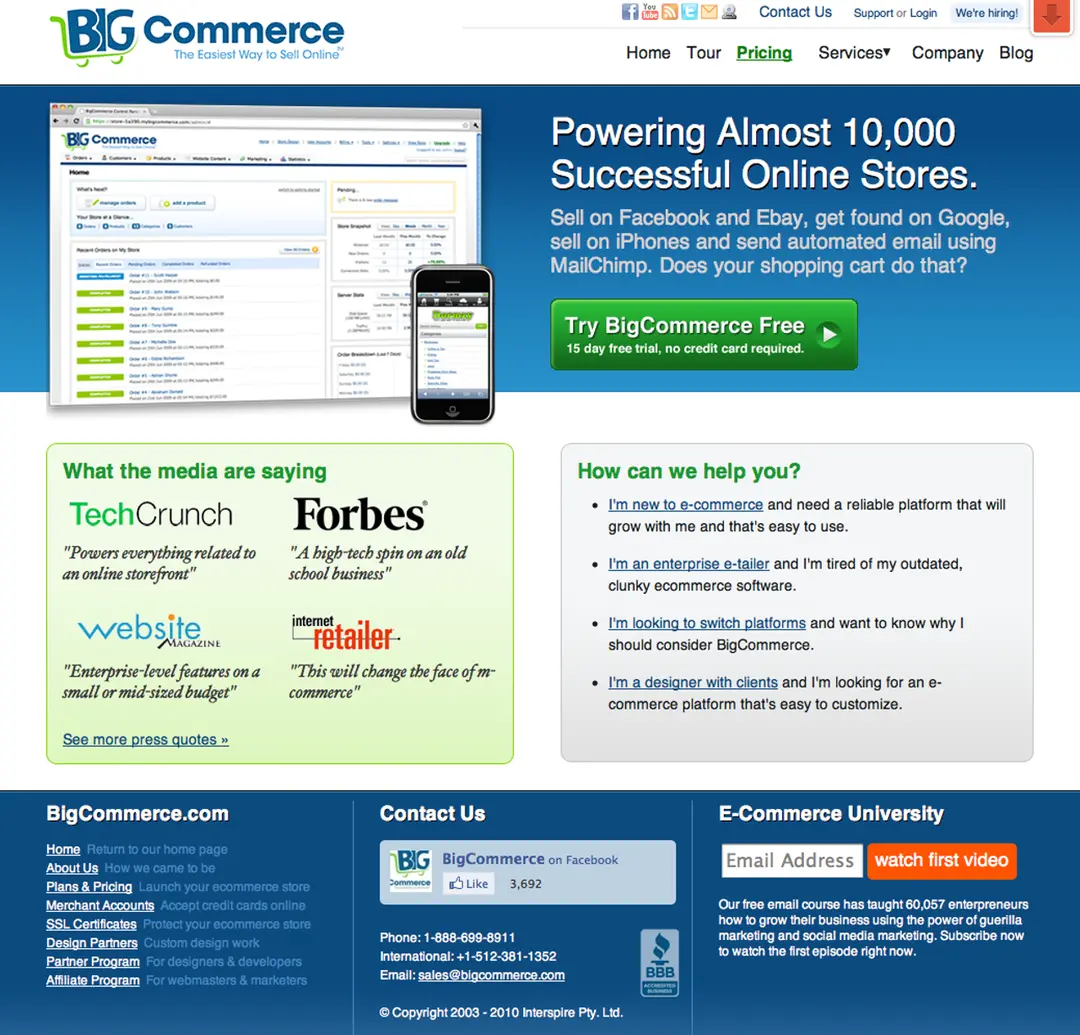
BigCommerce soon gained popularity among businesses that sought an ecommerce solution without the technical headaches, all while retaining the customizability options necessary for growth and scalability. By 2011, BigCommerce was powering nearly 10,000 stores, solidifying its place in the ecommerce ecosystem.
A Transformative Period
This period marked a transformative phase in ecommerce, as platforms like Magento and BigCommerce democratized online selling. Businesses could now leverage powerful tools to establish and grow their online presence without the need for extensive technical expertise. This shift not only broadened the reach of ecommerce but also fueled the growth of countless small and medium-sized enterprises.
Following the dot-com crash, ecommerce companies began to regain momentum, paving the way for the emergence of innovative ecommerce platforms.
Magento: A New Era of Customizability
In 2007, Magento was created by Varien and later acquired by eBay. Initially, Varien built their platform on osCommerce, but soon found it inadequate for the extensive features and functionalities they envisioned. As a result, they decided to develop a new open-source solution from the ground up.

Magento quickly gained traction, becoming one of the leading open-source ecommerce platforms of its time. In its first year alone, it was downloaded over 500,000 times. The platform’s popularity stemmed from its robust customizability options, allowing businesses to tailor their stores to meet specific needs. This open-source nature empowered merchants to break free from proprietary solutions, enabling them to take full ownership of their ecommerce ventures.
BigCommerce: Simplifying Ecommerce for All
In 2009, BigCommerce was launched after its founders met in an online programming chat. Initially conceived as a shopping-cart-only solution called Interspire, BigCommerce quickly evolved in response to customer feedback. Users struggled with the complexities of manually finding, installing, and updating software on a server, prompting the founders to shift their focus to creating a more user-friendly platform.

BigCommerce soon gained popularity among businesses that sought an ecommerce solution without the technical headaches, all while retaining the customizability options necessary for growth and scalability. By 2011, BigCommerce was powering nearly 10,000 stores, solidifying its place in the ecommerce ecosystem.
A Transformative Period
This period marked a transformative phase in ecommerce, as platforms like Magento and BigCommerce democratized online selling. Businesses could now leverage powerful tools to establish and grow their online presence without the need for extensive technical expertise. This shift not only broadened the reach of ecommerce but also fueled the growth of countless small and medium-sized enterprises.
2010-2020: The Platform Puzzle
2010-2020: The Platform Puzzle
As the 2010s began, ecommerce experienced a remarkable surge, with global ecommerce sales growing eightfold throughout the decade. This period brought significant shifts in user behavior as new platforms emerged, fundamentally reshaping how users interacted with brands online.
Design Changes
The 2010s witnessed a substantial improvement in the design and functionalities of ecommerce stores. Many features that had been carefully implemented in the 1990s and early 2000s became foundational elements for every ecommerce platform.

As more businesses ventured into the ecommerce landscape, standing out through unique branding and design became essential. Ecommerce platforms that emerged in the late 2000s provided increased customization options for storefronts, allowing businesses to create tailored shopping experiences.
This shift also spurred the rise of new technologies, concepts, and approaches that would redefine websites, including ecommerce storefronts. For example, Jamstack, a concept coined by Netlify in 2015, and static-site generator frameworks like Gatsby and Next.js, allowed businesses greater control over their storefront designs, ultimately enhancing user experience.
Mobile Commerce
The 2010s marked a pivotal era for mobile commerce. Ecommerce businesses began launching mobile apps, enabling consumers to access the same functionalities available on the web from their smartphones. This evolution progressed from basic designs to sleek, user-experience-oriented interfaces.
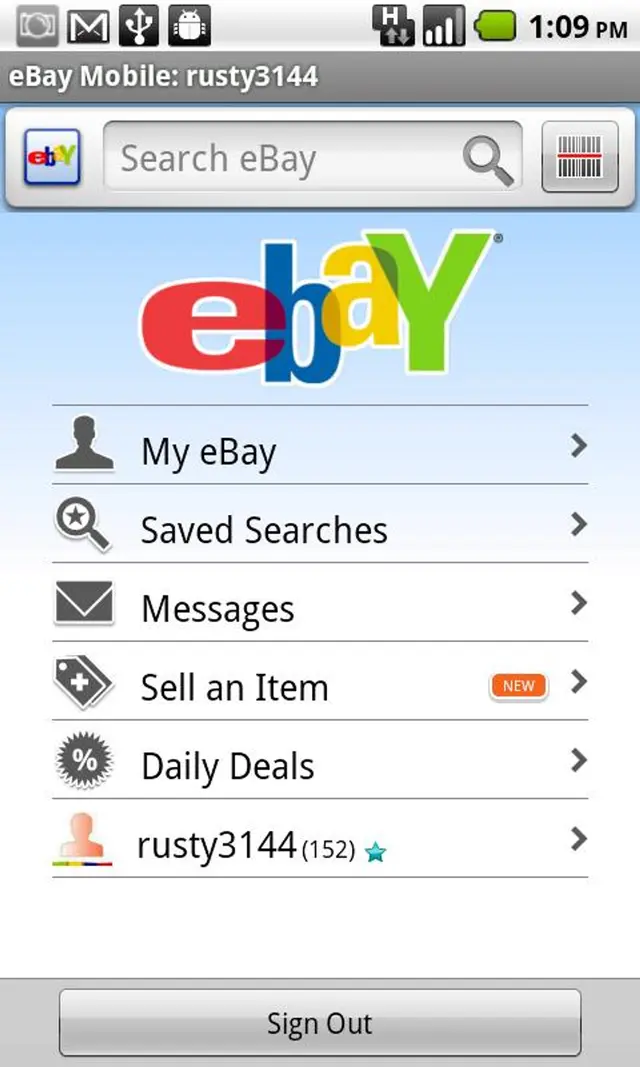
As a result, developers needed to design and build APIs within their existing systems to support mobile development, transitioning ecommerce from a single web platform to multiple access points for consumers.
Social Commerce
In the mid-2010s, social commerce emerged as a significant trend. In 2015, Pinterest introduced shopping capabilities through Buyable Pins, allowing users to purchase products directly from the platform. Instagram followed suit in 2018 with the launch of Instagram Shop, which enabled users to browse and buy products from businesses without leaving the app.

The introduction of social commerce provided businesses with additional avenues to attract new customers. Consequently, companies began investing in social marketing strategies to ensure potential customers could discover their products on these platforms, leading to increased conversion rates.
Stripe and the Emergence of New Ecommerce Infrastructure
Alongside the evolution of ecommerce platforms, a new type of infrastructure began to emerge, enhancing the overall commerce experience. This included analytics and backend-focused tools, as well as innovative solutions addressing complex issues in areas such as payment processing and distribution.

In 2010, brothers Patrick and John Collison founded Stripe, one of the most notable infrastructure solutions in this new commerce era. Frustrated by the difficulties of accepting online payments through their side projects, they developed a quick solution in just two weeks and successfully processed their first transaction. After several iterations, they officially launched Stripe, originally named dev/payments.
Initially aimed at developers, Stripe quickly gained traction as it solved problems that the entire internet faced. According to Patrick, existing solutions like PayPal and Google Checkout were often “confusing,” and Stripe sought to provide a simpler alternative.
Stripe revolutionized the payment landscape by making it easy for anyone to start selling online while offering a payment infrastructure that facilitated the creation of custom setups. Following Stripe’s lead, numerous startups emerged to address other aspects of the ecommerce infrastructure with similar developer-first approaches.
As the 2010s began, ecommerce experienced a remarkable surge, with global ecommerce sales growing eightfold throughout the decade. This period brought significant shifts in user behavior as new platforms emerged, fundamentally reshaping how users interacted with brands online.
Design Changes
The 2010s witnessed a substantial improvement in the design and functionalities of ecommerce stores. Many features that had been carefully implemented in the 1990s and early 2000s became foundational elements for every ecommerce platform.

As more businesses ventured into the ecommerce landscape, standing out through unique branding and design became essential. Ecommerce platforms that emerged in the late 2000s provided increased customization options for storefronts, allowing businesses to create tailored shopping experiences.
This shift also spurred the rise of new technologies, concepts, and approaches that would redefine websites, including ecommerce storefronts. For example, Jamstack, a concept coined by Netlify in 2015, and static-site generator frameworks like Gatsby and Next.js, allowed businesses greater control over their storefront designs, ultimately enhancing user experience.
Mobile Commerce
The 2010s marked a pivotal era for mobile commerce. Ecommerce businesses began launching mobile apps, enabling consumers to access the same functionalities available on the web from their smartphones. This evolution progressed from basic designs to sleek, user-experience-oriented interfaces.

As a result, developers needed to design and build APIs within their existing systems to support mobile development, transitioning ecommerce from a single web platform to multiple access points for consumers.
Social Commerce
In the mid-2010s, social commerce emerged as a significant trend. In 2015, Pinterest introduced shopping capabilities through Buyable Pins, allowing users to purchase products directly from the platform. Instagram followed suit in 2018 with the launch of Instagram Shop, which enabled users to browse and buy products from businesses without leaving the app.

The introduction of social commerce provided businesses with additional avenues to attract new customers. Consequently, companies began investing in social marketing strategies to ensure potential customers could discover their products on these platforms, leading to increased conversion rates.
Stripe and the Emergence of New Ecommerce Infrastructure
Alongside the evolution of ecommerce platforms, a new type of infrastructure began to emerge, enhancing the overall commerce experience. This included analytics and backend-focused tools, as well as innovative solutions addressing complex issues in areas such as payment processing and distribution.

In 2010, brothers Patrick and John Collison founded Stripe, one of the most notable infrastructure solutions in this new commerce era. Frustrated by the difficulties of accepting online payments through their side projects, they developed a quick solution in just two weeks and successfully processed their first transaction. After several iterations, they officially launched Stripe, originally named dev/payments.
Initially aimed at developers, Stripe quickly gained traction as it solved problems that the entire internet faced. According to Patrick, existing solutions like PayPal and Google Checkout were often “confusing,” and Stripe sought to provide a simpler alternative.
Stripe revolutionized the payment landscape by making it easy for anyone to start selling online while offering a payment infrastructure that facilitated the creation of custom setups. Following Stripe’s lead, numerous startups emerged to address other aspects of the ecommerce infrastructure with similar developer-first approaches.
2020s and Ecommerce Modularization
2020s and Ecommerce Modularization
The ecommerce landscape has significantly evolved, encompassing not just web platforms as sales channels but also mobile apps, social apps, and more. This expansion has created a pressing need for ecommerce solutions that provide omnichannel support, frontend flexibility, and an extensive feature offering.
Shift Towards Headless and Composable Architectures
In response to these evolving needs, the 2020s have seen both new and existing ecommerce solutions adopt headless and composable architectures. Traditional approaches for building ecommerce applications, which were once monolithic and tightly coupled, have proven to be limiting in today's fast-paced environment.
Developers are now seeking modular solutions that are less rigid and more open to customization. This shift allows businesses to break free from constraints and avoid cumbersome workarounds, enabling them to innovate more freely.
The Rise of Point Solutions
The emergence of point solutions focusing on specific domains within ecommerce has facilitated this transition toward modularity. By integrating various specialized services, developers can construct a modern product stack tailored to meet their businesses’ exact requirements while maintaining scalability.
Future Trends in Ecommerce
As ecommerce and the technology sector continue to grow rapidly, new trends will consistently emerge. However, one constant remains: businesses will always strive to exceed their current potential. To foster innovation and create unique customer experiences, ecommerce solutions must embrace a modular approach, ensuring both scalability and flexibility.
The ecommerce landscape has significantly evolved, encompassing not just web platforms as sales channels but also mobile apps, social apps, and more. This expansion has created a pressing need for ecommerce solutions that provide omnichannel support, frontend flexibility, and an extensive feature offering.
Shift Towards Headless and Composable Architectures
In response to these evolving needs, the 2020s have seen both new and existing ecommerce solutions adopt headless and composable architectures. Traditional approaches for building ecommerce applications, which were once monolithic and tightly coupled, have proven to be limiting in today's fast-paced environment.
Developers are now seeking modular solutions that are less rigid and more open to customization. This shift allows businesses to break free from constraints and avoid cumbersome workarounds, enabling them to innovate more freely.
The Rise of Point Solutions
The emergence of point solutions focusing on specific domains within ecommerce has facilitated this transition toward modularity. By integrating various specialized services, developers can construct a modern product stack tailored to meet their businesses’ exact requirements while maintaining scalability.
Future Trends in Ecommerce
As ecommerce and the technology sector continue to grow rapidly, new trends will consistently emerge. However, one constant remains: businesses will always strive to exceed their current potential. To foster innovation and create unique customer experiences, ecommerce solutions must embrace a modular approach, ensuring both scalability and flexibility.
Conclusion
The evolution of ecommerce is a testament to the innovative spirit that drives the industry forward. From the early days of online shopping to the sophisticated, omnichannel experiences of today, the landscape has continually adapted to meet the needs of consumers. As we look toward the future, embracing headless commerce is essential for brands seeking to remain competitive in a rapidly changing environment. By leveraging modular solutions, businesses can create unique, tailored experiences that resonate with their audience while ensuring scalability and flexibility.
Join the Future of Commerce with Us!
Are you ready to elevate your brand and redefine your ecommerce strategy? Embrace the power of headless commerce and unlock unparalleled flexibility, scalability, and customer experience.
Don’t get left behind—partner with us to stay ahead of the curve and transform the way you connect with your customers.
The evolution of ecommerce is a testament to the innovative spirit that drives the industry forward. From the early days of online shopping to the sophisticated, omnichannel experiences of today, the landscape has continually adapted to meet the needs of consumers. As we look toward the future, embracing headless commerce is essential for brands seeking to remain competitive in a rapidly changing environment. By leveraging modular solutions, businesses can create unique, tailored experiences that resonate with their audience while ensuring scalability and flexibility.
Join the Future of Commerce with Us!
Are you ready to elevate your brand and redefine your ecommerce strategy? Embrace the power of headless commerce and unlock unparalleled flexibility, scalability, and customer experience.
Don’t get left behind—partner with us to stay ahead of the curve and transform the way you connect with your customers.
Don't Forget to Share this post:
Recommended Resources
Recommended Resources
Recommended Resources
Recommended Resources
Recommended Resources
Table of content
